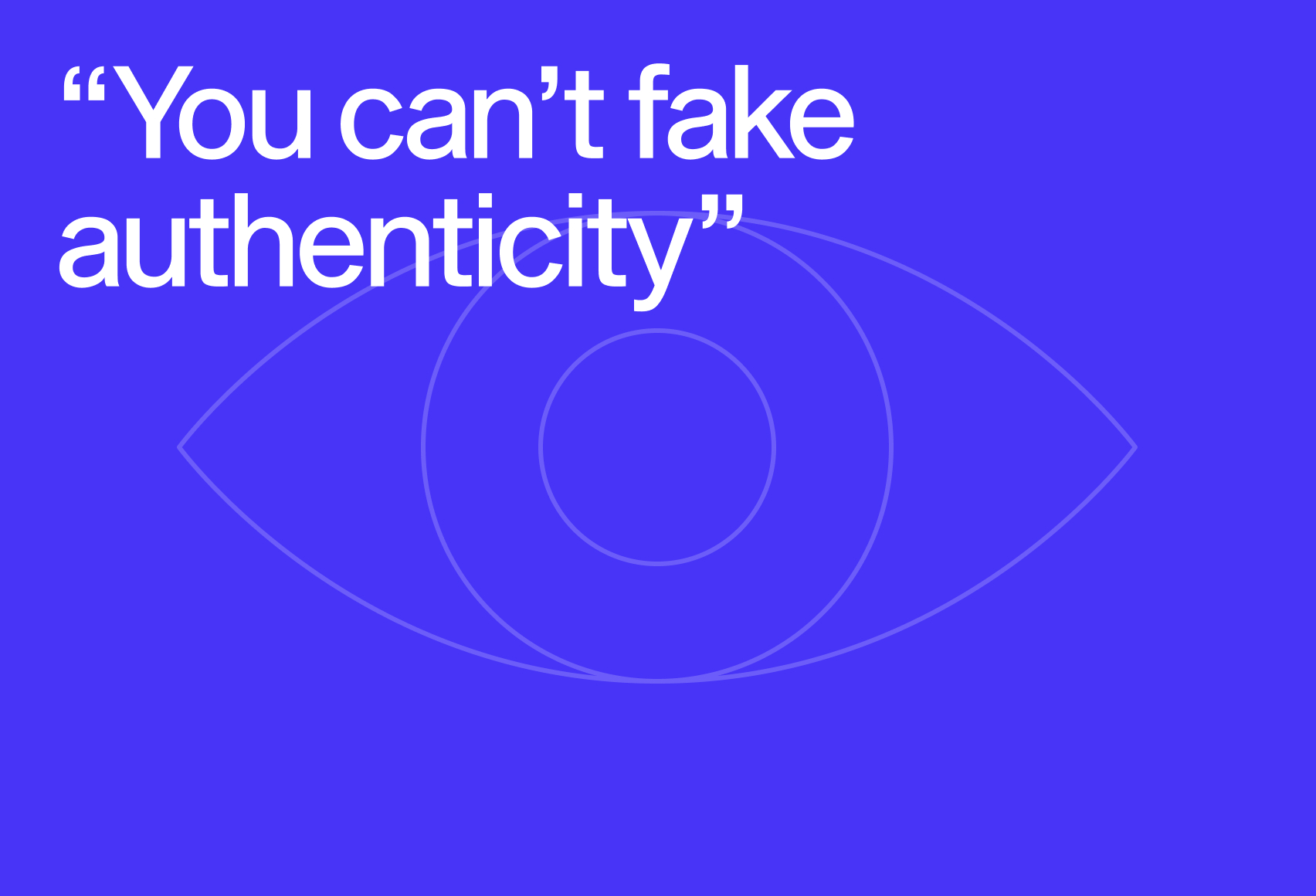Ever tried sprinting while still tying your shoes? That’s kind of what building a brand as a startup can feel like sometimes. Limited time, few resources, and often no dedicated marketing lead – and yet founders are still forced to make decisions that reshape their brands for years to come.
In these situations, what you need is a little clarity, and a lot of perspective. So I spoke with Sivan Michaeli-Roimi, VP Marketing at Pynt.io, Founder of Heyou.io, and startup growth guru, to understand how she guides startups through the messy but vital stages of brand building and social media.
“There are no silver bullets,” Sivan told me at the start of our conversation. “It takes dedication and hard work. Before you even think about design, you need to spend time on ideation – figuring out who you are as a company.”

Start With Who You Are
When a startup is on the precipice of launching, social media often feels like a checklist item: create accounts, post content, run ads. Sivan stresses that it can’t be treated as an afterthought.
“Social media is about authentically engaging with people today. You can’t fake authenticity, you can’t fake building connections,” she explained.
And that starts with a clear foundation: who we are, what we want to portray, and what conversations we want to drive. Only then can a team develop the visual language and voice that carries across brand assets and social content.
“Founders often just want to get started. Speed is critical, but how can you start without knowing what you’re going to say? Messaging and brand development start with diving deep into understanding which company we’re building, which problem/s are we solving, and what are the emotional drivers of our buyers. If you don’t know it yet, then build that profile of who your suspected buyers are, and what their goals are. Without those, you can’t build a sustainable brand.”
Don’t Outsource Your Design – Equip Your Designer With A Strong Vision
Branding relies heavily on the visual. So if you’re just handing off brand work to a good designer with only a vague direction and hoping they’ll “just know” what to create – you’re setting yourself up for struggle.
Sivan sees this mistake often.
“It’s like when you go to MidJourney or ChatGPT – the outcome is only as good as your prompt. Don’t expect your designer to pick into your brain. Come prepared with research, exploration, and clear guidelines for the designer to be able to step into your shoes and see your vision and your dreams with clarity – then bring it to life. A designer can’t design something they don’t understand.”
That preparation – goals, mindset, brand vision – is the founder’s responsibility. A good designer can take all of that input and build on it with sharper questions and their own expertise. But they can’t invent your brand authentically from scratch.

Validate Your Assumptions With Real Customers
Founders are passionate about their product. They’re sure every person on their buyer persona list will immediately fall in love with their product once they get it. But passion doesn’t always replace validation – or data.
“Don’t assume you know your customer without talking to actual customers,” Sivan said. “You need perspective from the field, not just assumptions.”
Her advice? Simple: run quick focus groups, schedule short interviews, reach out to 50 people on LinkedIn and talk to them.
“While I’m the one selling the product and probably know it by heart, I’m not the buyer. I need to do the work: listen to calls, conduct interviews, and collect surveys. When people say something is good on my website, it’s usually something my customers said first. I might add some spice, but the core message always reflects what people are saying and looking to achieve. The challenge is combining what customers are saying with your own vision of the future.”
Balance Short-Term Gains With Long-Term Brand
It’s easy to swing too far in one direction when your resources are limited: either all-in on ads and lead-gen, or overly focused on brand awareness. Sivan says both are essential.
“Your investment should be divided into two areas: short-term and long-term. At the end of the day, you need to sell. But you also need to build a brand people want to stay with for the long-term. It’s 50/50.”
This means pairing campaigns that drive immediate revenue (SEO and GEO, lead generation campaigns, sponsorships, sales development campaigns, etc.,) with content that builds sustainable brand equity (engagement, storytelling, community). Driving awareness and getting leads have different KPIs, and the biggest challenge for marketers today.
She highlights LinkedIn as a particularly underleveraged tool:
“95% of conversations start on LinkedIn. That’s where Sales should focus. Building relationships, engaging with prospects and customers’ posts, and starting genuine conversations.”
.jpg)
Lead With Stories, Not Sales Pitches
When it comes to what to post, Sivan is clear: keep vainglorious promotion off social channels.
“The only place that should promote your product is your homepage, product pages, and case studies. Everything else should be value-driven. On social media, you don’t promote your product – you promote ideas, you lead the market, and create conversations.”
She gave an example of a story she built with her team at Pynt about how they used AI to “hack itself”, and the experiment turned into a viral story reaching tens of thousands of people. Not by pushing product, but by sparking interest around an idea.
“Every piece of content should focus on adding value to people. That’s how you build trust and authentic relationships. People want to buy from people, and from brands they love.”
If You’re “Not Ready,” Start Anyway
Many founders hesitate to show up on social media because they feel uncomfortable or not fully prepared. Sivan’s advice: acknowledge that discomfort, and move through it.
“Being a founder is hard. The areas where you feel uncomfortable are exactly the ones that hold you back. The earlier you face them, the sooner the problem is solved. We all have challenges every day, and plenty of opinions. Even if writing doesn’t come naturally, you can take those raw thoughts and use ChatGPT to help shape them into stories. The important thing is doing.”
She recommends turning social posting into a recurring task (weekly or biweekly) and using widely-available tools to make the process easier. Consistency, even without immediate engagement, builds confidence over time.
Final Thoughts
Launching a brand on social media isn’t about quick hacks or perfect design from day one. It’s about doing the hard work early: defining your identity, listening to customers, balancing sales with storytelling, and showing up consistently. And on top of it all, remembering why we’re all there – to find something of value to us.
As Sivan puts it:
“At the end of the day, there are no silver bullets. But if you stay authentic, listen to your customers, and start before you feel ready, you’ll build a brand people want to engage with.”






